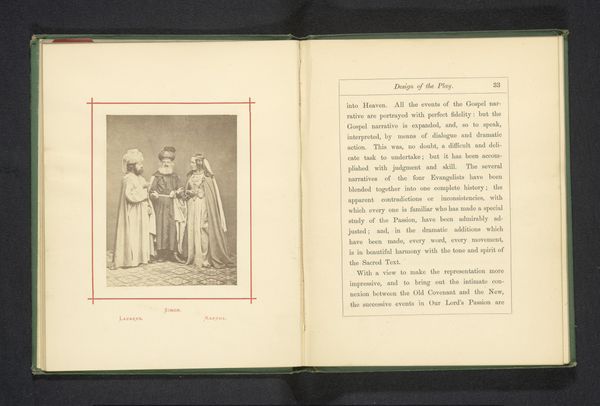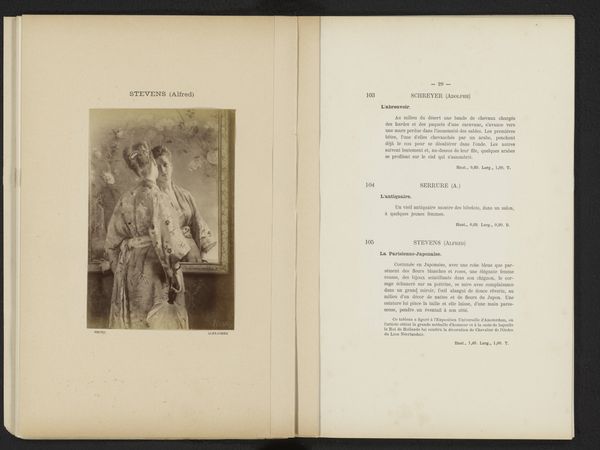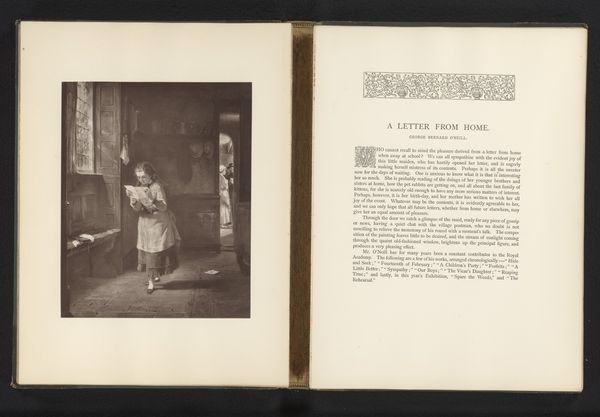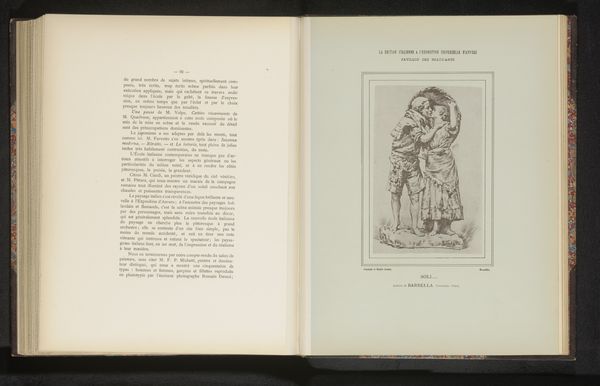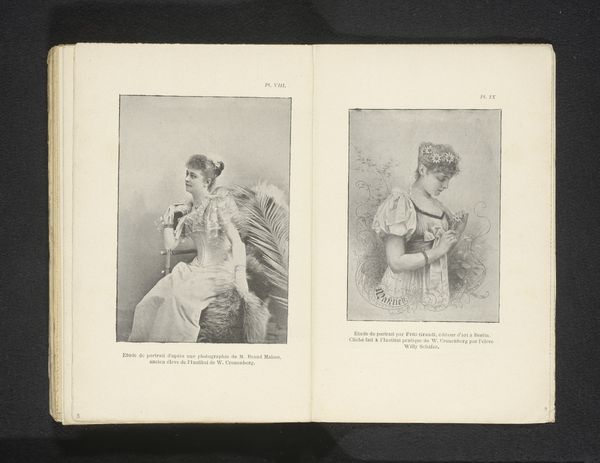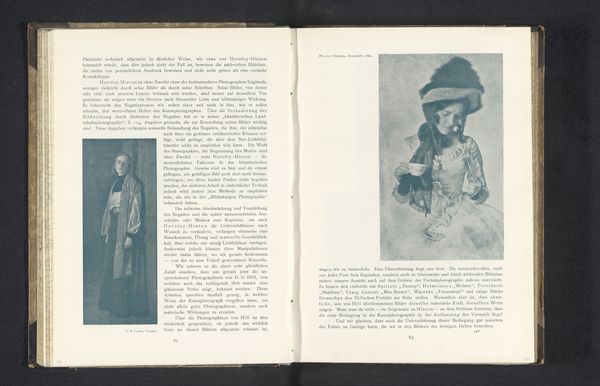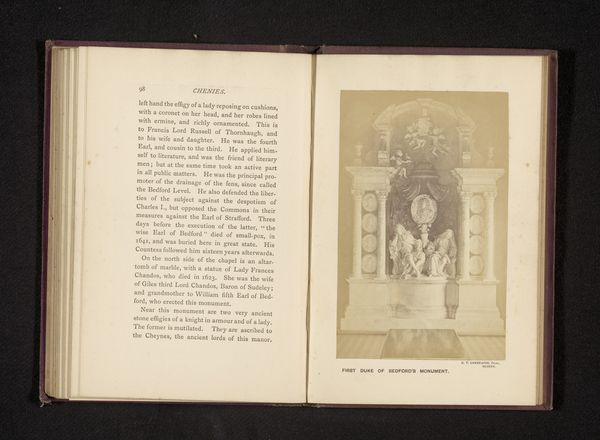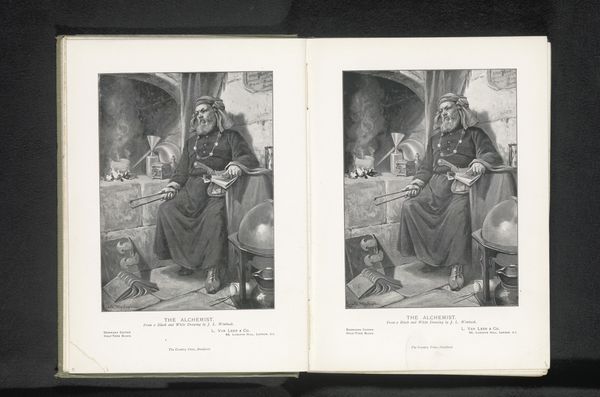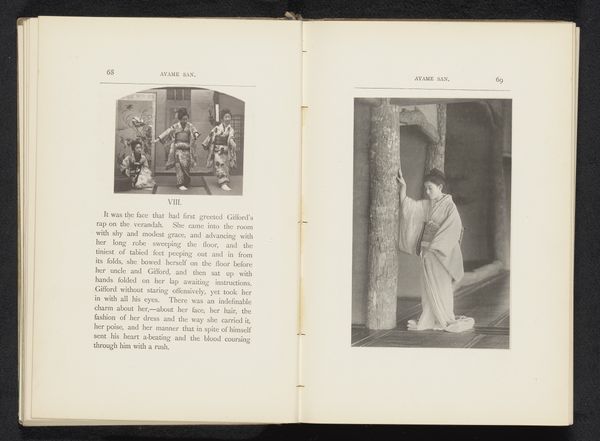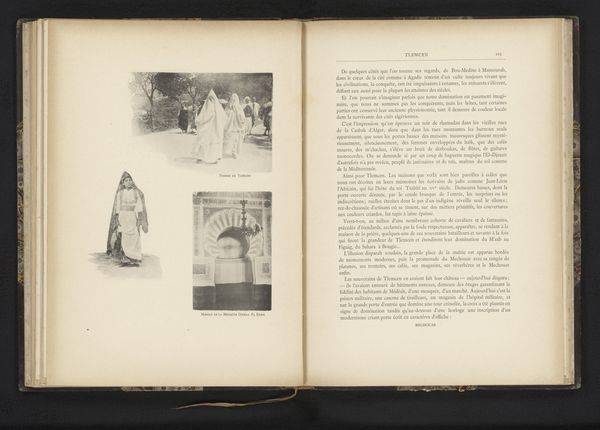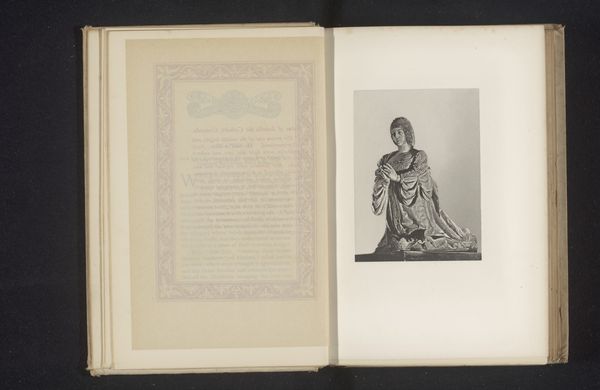
drawing, print, sculpture, engraving
#
portrait
#
drawing
# print
#
sculpture
#
engraving
#
realism
Dimensions: height 260 mm, width 149 mm
Copyright: Rijks Museum: Open Domain
Editor: We're looking at "Sculptuur 'Dom Bazile' door Zacherie Astruc," a piece dating from before 1883. It appears to be a reproduction of a sculpture, likely through engraving and print. There's such strong contrast in the blacks and whites and the rendering of texture; I am very curious what your insights might be regarding this striking print? Curator: Indeed. The interplay of light and shadow is quite pronounced. Focusing on its formal qualities, observe how Astruc meticulously delineates the textures, juxtaposing the smoothness of the face against the intricate patterns of the background. Do you see how the composition divides the figure from the patterned background? What meaning might you derive from this, especially given the subject matter and his attire? Editor: The stark background does frame him well, but what strikes me most is the texture. How, through simple lines, is such a profound sense of depth conveyed? I suppose I'm stuck on its medium, perhaps more than its message. Curator: Consider how the medium, engraving, inherently dictates the reliance on line and shadow to create form. The artist is clearly playing with semiotics. How might one analyze the garment depicted as a symbol within the composition? Editor: That is a great question. Perhaps a symbol of rank, although he is rather dwarfed by that wall! It is incredible that the constraints of the medium become its greatest strength. Thank you, I have new ideas to consider. Curator: And I, in turn, am reminded how integral texture can be to the visual encoding of an image.
Comments
No comments
Be the first to comment and join the conversation on the ultimate creative platform.
